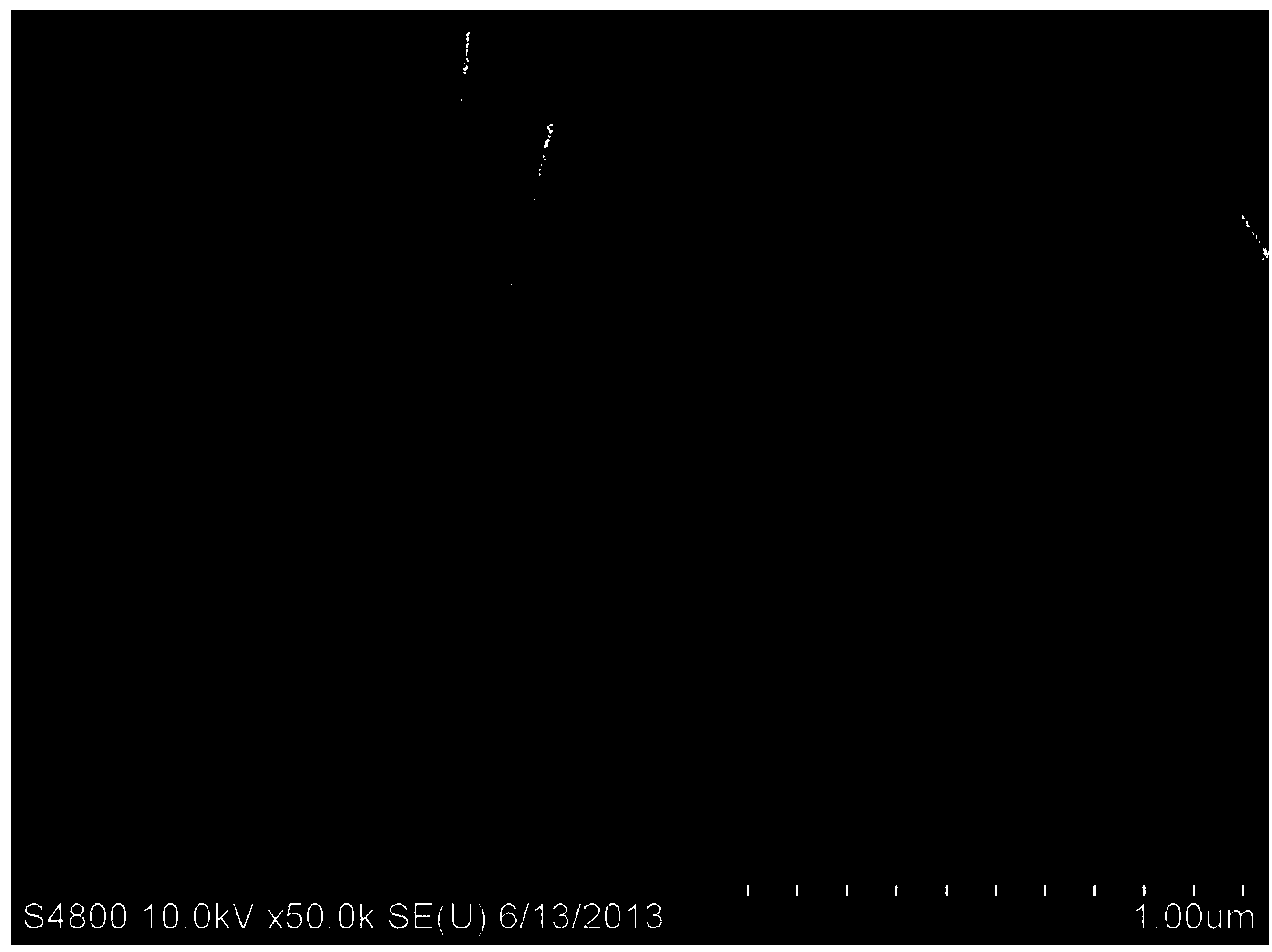Positive electrode material of lithium sulfur battery and preparation method and application of material
A sulfur cathode material, a technology for lithium-sulfur batteries, applied in battery electrodes, lithium batteries, positive electrodes, etc., can solve problems such as low load, damage to electrode structure, and loss of electrode capacity from active materials
- Summary
- Abstract
- Description
- Claims
- Application Information
AI Technical Summary
Problems solved by technology
Method used
Image
Examples
preparation example Construction
[0076] The sulfur cathode material of the present invention can be prepared by conventional methods in the art, and a preferred preparation method includes the following steps:
[0077] (a) mixing nanomaterials of the present invention, elemental sulfur, conductive carbon black, binder and solvent to obtain slurry;
[0078] (b) coating the obtained slurry on a conductive current collector to obtain the sulfur cathode material of the present invention.
[0079] Preferably, in step (b), the conductive current collector coated with the slurry is dried under vacuum for 1-24 hours at a drying temperature of 20-80°C (preferably 40-60°C).
[0080] Wherein, the conductive current collector includes aluminum film, nickel film, etc., and the solvent can be selected from organic solvent or water, preferably N-methylpyrrolidone (NMP).
[0081] The above-mentioned features mentioned in the present invention, or the features mentioned in the embodiments can be combined arbitrarily. All th...
Embodiment 1
[0094] Example 1: Porous Fe 2 o 3 Preparation and structure characterization of nanoparticles
[0095] Weigh 3.8 grams of PVP, dissolve 0.11 grams of potassium ferrocyanide in 50 ml of 0.1 molar hydrochloric acid solution, and dissolve all solids by magnetic stirring. The obtained solution was placed in an oil bath at 80° C. for 12 h to obtain a precipitate. The precipitate was centrifuged at 9000 rpm to obtain the product, which was washed three times with distilled water and ethanol respectively and centrifuged to obtain solid particles. The resulting solid particles were vacuum dried at room temperature and then calcined at 500 °C to obtain porous Fe 2 o 3 nanoparticles.
[0096] Porous Fe prepared in this example 2 o 3 Nanoparticles were analyzed by SEM structure, and the test results were as follows: figure 1 shown, from figure 1 It can be seen that the prepared porous Fe 2 o 3 The size distribution of nanoparticles is uniform, between 300-500nm. figure 2 wit...
Embodiment 2
[0097] Example 2: Porous Fe 2 o 3 Preparation of nanoparticles and their structural characterization (as a comparative example, the temperature is 550°C)
[0098] Porous Fe in this embodiment 2 o 3 The preparation of nanoparticles is basically the same as in Example 1, except that the calcination temperature is 550°C.
[0099]The specific steps are as follows: Weigh 3.8 grams of PVP, dissolve 0.11 grams of potassium ferrocyanide in 50 ml of 0.1 molar hydrochloric acid solution, and dissolve all solids by magnetic stirring. The obtained solution was placed in an oil bath at 80° C. for 12 h to obtain a precipitate. The precipitate was centrifuged at 9000 rpm to obtain the product, which was washed three times with distilled water and ethanol respectively and centrifuged to obtain solid particles. The obtained solid particles were vacuum-dried at room temperature and then calcined at 550 °C to obtain porous Fe 2 o 3 nanoparticles. The pore size of the particles is 20-40 n...
PUM
| Property | Measurement | Unit |
|---|---|---|
| Aperture | aaaaa | aaaaa |
| Size | aaaaa | aaaaa |
| Aperture | aaaaa | aaaaa |
Abstract
Description
Claims
Application Information
 Login to View More
Login to View More - R&D
- Intellectual Property
- Life Sciences
- Materials
- Tech Scout
- Unparalleled Data Quality
- Higher Quality Content
- 60% Fewer Hallucinations
Browse by: Latest US Patents, China's latest patents, Technical Efficacy Thesaurus, Application Domain, Technology Topic, Popular Technical Reports.
© 2025 PatSnap. All rights reserved.Legal|Privacy policy|Modern Slavery Act Transparency Statement|Sitemap|About US| Contact US: help@patsnap.com



